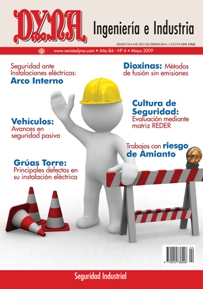DEFICIENCIES IN THE ELECTRICAL SYSTEMS OF PORTABLE TOWER CRANES AT CONSTRUCTION SITES
Keywords:
seguridad industrial, grúas torre, instalaciones eléctricas, seguridad en la construcción, prevención de riesgos laborales.Abstract
Tower cranes are a common fixture at any major construction site. The assembly of tower cranes as well as their maintenance and operation can be the source of important risks for the workers. However, research work carried out in this field is mostly based on the analysis of information from work accident reports, rather than the monitoring of actual working conditions at operating construction sites. The objective of this research study is to identify and detect frequent deficiencies in the electrical systems of portable tower cranes during the implementation phase of construction work. The results will be conducive to establishing a set of corrective measures that can be implemented by project designers, installers, maintenance experts, users, and government agencies. For this reason we inspected 110 portable tower cranes at various construction sites. The data was collected and recorded on an ad hoc checklist. It was then analyzed and statistically treated with the software application SPSS.13 for Windows. The principal elements or variables where deficiencies were most frequently detected were the following: (i) documents certifying the existence of a maintenance contract, (ii) electric control box, (iii) control pushbutton panel, (iv) ground lead. Any defect in these elements is potentially the source of a high risk situation because of the serious consequences that can ensue. The detection of such defects at constructions sites signifies that the installations are defective and thus unsafe. Ground leads along with non-conforming differential switches are extremely dangerous, and constitute a high risk factor that must be controlled and eradicated through the joint efforts of all agents involved.Downloads
Published
2009-05-05
Issue
Section
ARTICULOS

